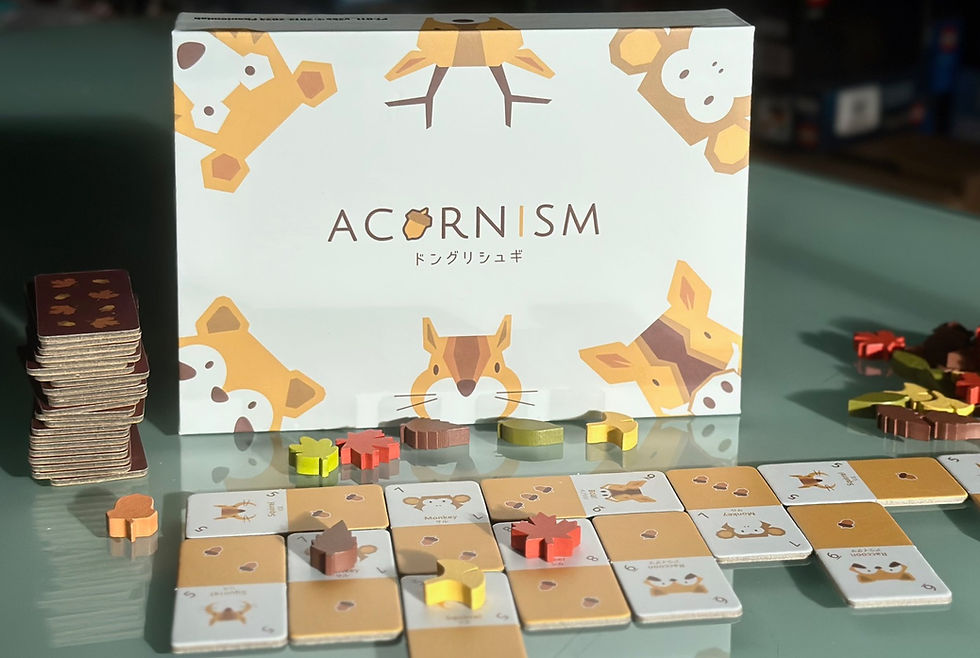Hats
- Board's Eye View

- Sep 6, 2019
- 3 min read
Updated: Oct 24, 2020
Though Hats (Thundergryph) is essentially an abstract card game, it's notionally themed around the Mad Hatter's Tea Party in Alice in Wonderland. And tho' the only overt reference to this is the bizarre hats that are depicted on the various cards (more easily distinguished by the colours of the suits), the apparently mad gameplay certainly fits the theme.
Hats plays with 2–4 players but it is different with each of these player counts. As a three-player game, all 42 cards (7 suits of six cards each) are used and full use is made of the 'tea table' board that ranks cards 1–6 for the purpose of end-game scoring. With just two players, two of the suits are removed (we recommend dropping the orange suit as it is only a few shades different from the red suit, so these two can be easily confused) and only spots 1–5 are used on the 'tea table' board. Four-player games use all the cards but are played as two teams, and players are able to trade cards with their partner (tho' they have to try to work out from their play what cards their partner has and what they might need).

Six cards are laid out at random on the 'tea table' and each player is dealt a hand of nine cards. Each turn they can either substitute one of their cards for one on the 'tea table' of the same suit or substitute a card from any suit provided its numerical value is higher than the card it is replacing. The card obtained from the swap is played to the tableau in front of the player. As an alternative, players can also on their turn play a card from their hand face down to their tableau where it represents a 'black hat' and will score 1 point at the end of the game.
Obviously, you'll want to get cards into your tableau that correspond to the high value positions on the 'tea table', since their end-game points value will correspond to that position. The problem is that all the players will be jockeying for position on the 'tea table' to try to increase the worth of their cards. At least one suit will end up scoring nothing at all, so you could find the cards in your tableau for which you were banking on scoring six points apiece end up being worthless thanks to a last minute switcheroo from an opponent. If not actually mad, this can certainly be maddening!
And there's more. The game comes with a (plastic) choc chip cookie. This isn't for dunking in your cuppa, it's to signify throughout the game the player with the most colours in their tableau (for this purpose, counting the 'black hat' card as an eighth suit). If there's a tie for most colours, the cookie is held by the player with the lowest value cards. You'll see it change hands several times over the course of a game but what counts is where it ends up at the end of the game: it's worth 5 points in end-game scoring.
Hats is played over eight rounds, so you'll be left with a card in your hand at the end of the game. This is deemed your 'favourite'; tho' you'll score negative points for its numerical value, you'll score the actual value of the cards in your tableau of the matching suit. This can turn out to be a game winner.
For a game that's quick and easy to learn' there's a lot going on in Hats. Nicely packaged with art by Paolo Voto and a wipeable 'napkin' board for working out the scores, the game is a clever design by Gabriele Bubola that will probably feel very random on your first play but where, a couple of plays in, you'll appreciate the strategies you'll need to build a decent score. You'll come to realise that the gameplay isn't as mad as it first seemed.
You'll find too that the dynamics of play with the three different player counts differ so much that it's almost like getting three games for the price of one!




